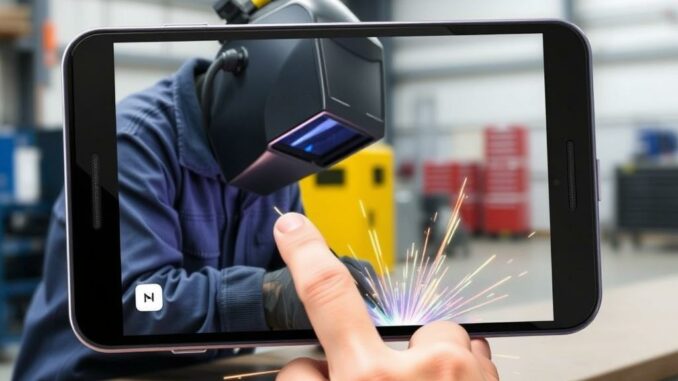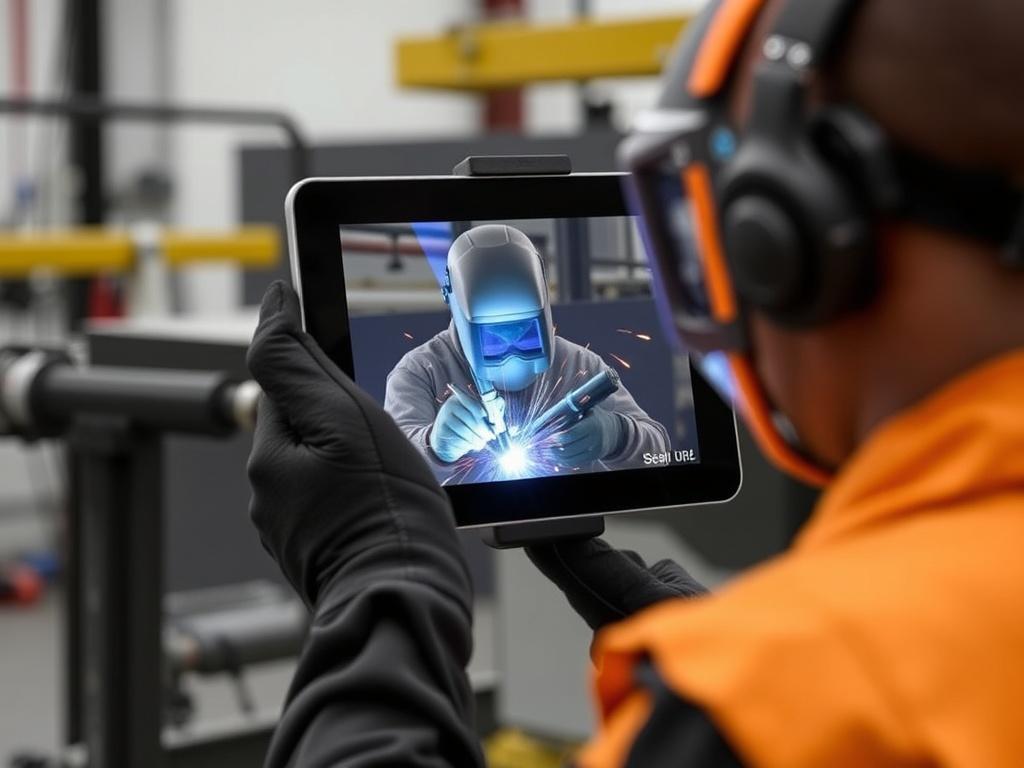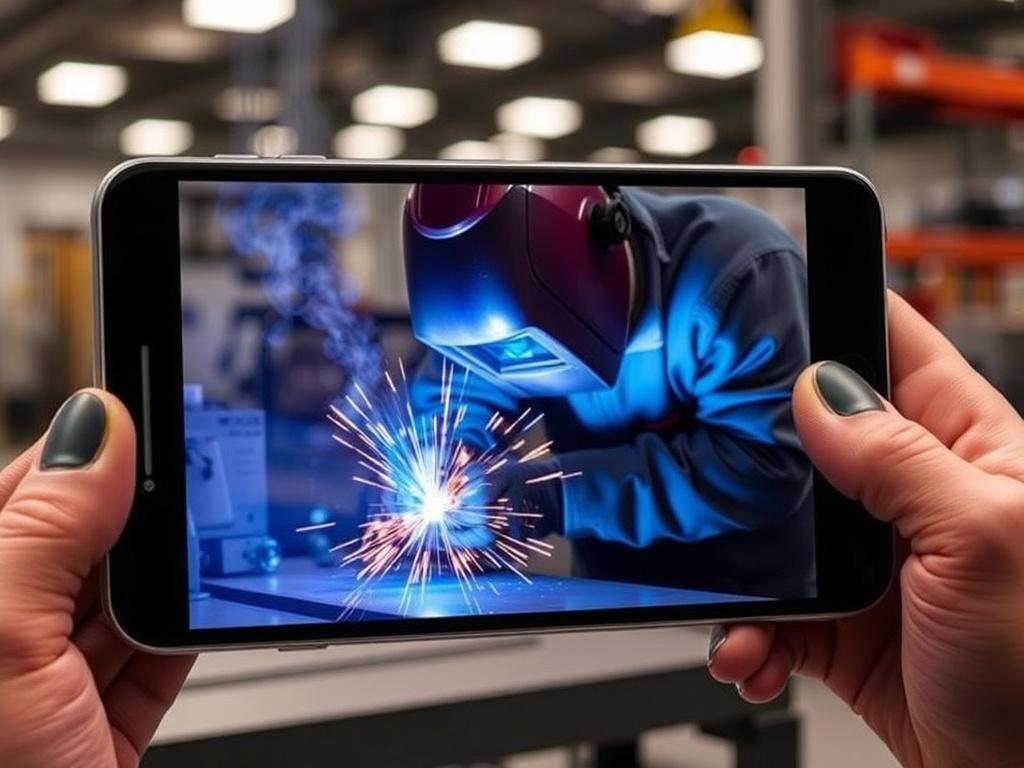
SQLITE NOT INSTALLED
In the fast-paced world of industrial manufacturing and fabrication, welding remains one of the most critical skills. However, traditional welding training methods often come with challenges such as high costs, safety concerns, and limited accessibility. Enter Augmented Reality (AR), a technology that is transforming welding training by enhancing engagement, improving accuracy, and reducing risks. This article delves deep into how Augmented Reality for welding training is reshaping the way welders learn and perfect their craft, making the process more efficient, immersive, and effective than ever before.
Understanding Augmented Reality (AR) in the Context of Welding Training
Before we dive into how Augmented Reality revolutionizes welding training, it’s essential to understand what AR entails and how it differs from other technologies like Virtual Reality (VR). Augmented Reality superimposes computer-generated images, sounds, and other sensations onto the real world in real-time. For welding training, this means trainees can see digital instructions, diagrams, and guidance overlaid on actual welding equipment or workstations, creating an interactive and enriched learning environment.
Augmented Reality welding training systems often utilize smart glasses or head-mounted displays, combined with sensors and cameras, to track the movements and progress of trainees. This blend of the physical and digital worlds allows for an unprecedented hands-on experience, bridging the gap between theoretical learning and practical application.
The Traditional Challenges of Welding Training
Welding is a complex skill requiring precision, practice, and understanding of various welding techniques and safety protocols. Traditional training methods rely heavily on classroom instruction, live demonstrations, and supervised practice using real welding equipment. However, these approaches have several limitations:
- High Equipment and Material Costs: Welding machines, consumables, and safety gear can be expensive, limiting the availability of hands-on practice.
- Safety Risks: Welding involves intense heat, sparks, and fumes, posing dangers to beginners.
- Limited Accessibility: Not all trainees can access welding workshops frequently due to geographic or scheduling constraints.
- Resource Intensive: Training requires skilled instructors, equipment maintenance, and consumable materials.
- Difficult to Monitor Progress: Assessing trainee skills and offering real-time feedback is often subjective and challenging.
Augmented Reality offers solutions to many of these problems by providing a safe, cost-effective, and interactive training platform that enhances learning outcomes.
How Augmented Reality Enhances Welding Training
Integrating Augmented Reality into welding training opens up new possibilities for skill acquisition and mastery. Here’s how AR contributes to transforming welding education:
1. Visual Guidance and Step-By-Step Instructions
One of the standout features of Augmented Reality welding training is the ability to display step-by-step instructions directly in the trainee’s field of view. Instead of flipping through manuals or waiting for an instructor’s explanation, welders-in-training can see animated overlays showing the proper techniques, angles, and sequences as they work.
For example, an AR system can highlight the exact path to move the welding torch or indicate optimal settings for current and voltage. This immediate, contextual feedback accelerates learning and reduces errors.
2. Safe and Controlled Learning Environment
Safety is paramount in welding training, especially for beginners who may be unfamiliar with hazards. Augmented Reality allows trainees to practice welding motions without the dangers of working with real arcs and molten metal. By simulating these elements digitally while still interacting with actual welding hardware or mock setups, AR training significantly minimizes risk.
This controlled environment builds confidence and competence before moving to live welding sessions, improving overall safety in training programs.
3. Real-Time Feedback and Performance Evaluation
Another remarkable advantage of AR welding training is real-time performance tracking. Using sensors and advanced algorithms, the system can analyze every movement and parameter, such as torch angle, speed, and consistency. Trainees receive instant feedback on their technique, allowing them to make adjustments instantly rather than waiting for post-session assessments.
Moreover, trainers can access detailed analytics to understand individual progress and tailor instruction accordingly. This data-driven approach enhances effectiveness and helps identify areas needing improvement much faster.
4. Cost Efficiency and Accessibility
Augmented Reality lowers the barriers to entry by reducing reliance on costly consumables and equipment. Since many training activities happen in a virtual layer combined with physical input devices, material use declines drastically. Trainees can also practice welding skills remotely, expanding accessibility for those in geographically isolated areas or during disruptions like pandemics.
AR welding training modules can be deployed on various devices, from specialized glasses to tablets and smartphones, making it a flexible solution adaptable to different training environments.
Key Components of an Augmented Reality Welding Training System

Implementing effective AR training for welding involves integrating various technologies and hardware components that work seamlessly together. Understanding these building blocks helps grasp the full scope of AR-enabled welding education.
| Component | Role in AR Welding Training | Examples |
|---|---|---|
| Smart Glasses / Head-Mounted Displays (HMD) | Display digital overlays, instructions, and feedback directly in trainee’s field of vision. | Microsoft HoloLens, Magic Leap, Vuzix Blade |
| Sensors and Cameras | Track trainee movements, torch position, and environmental parameters. | Depth cameras, motion sensors, inertial measurement units (IMUs) |
| Software Platform | Delivers AR content, processes sensor data, and provides interactivity and training scenarios. | Custom AR welding apps, Unity or Unreal Engine-based software |
| Connectivity | Enables data transfer between hardware components and cloud-based analytics. | Wi-Fi, Bluetooth, 5G |
| Physical Training Equipment | Replicates welding hardware or mockups for hands-on practice enhanced by AR. | Welding torches, mock weld samples, robotic arms |
Each component contributes crucially to building an immersive and effective AR welding training experience. The synergy between hardware and software technologies is fundamental to delivering value to trainees and instructors alike.
The Training Process Using Augmented Reality

To fully appreciate the impact of AR on welding training, let’s walk through a typical training session powered by Augmented Reality technology.
Step 1: Setup and Calibration
The trainee puts on the smart glasses or HMD and initializes the AR system. Sensors and cameras scan the training station and align digital content with physical objects, ensuring virtual overlays accurately correspond to real-world placements.
Step 2: Orientation and Tutorials
New users receive an introductory tutorial presented as interactive AR overlays. The system highlights key concepts like safety protocols, welding tools, and basic techniques, making the onboarding process intuitive and engaging.
Step 3: Guided Practice
As the trainee begins welding practice, the AR platform displays real-time guidance, showing correct torch angles, movement speeds, and weld seam paths. This helps the welder visualize best practices as they execute them in real-time.
Step 4: Instant Feedback
Throughout the session, the system monitors the trainee’s performance metrics continuously, comparing actions to ideal standards. When mistakes occur, prompts and adjustments are suggested immediately, allowing the user to correct faults on the fly.
Step 5: Performance Review and Skill Assessment
After practice, trainees and instructors review detailed analytics showcasing strengths and weaknesses, such as consistency, accuracy, and adherence to safety. This data supports personalized coaching and goal setting for future sessions.
Benefits of Augmented Reality Welding Training for Trainees and Instructors
The adoption of Augmented Reality in welding training not only transforms learning but also offers tangible benefits to all stakeholders involved in skills development.
Enhanced Engagement and Motivation
AR’s interactive and visual nature makes learning more enjoyable and captivating compared to traditional text-heavy manuals or static demonstrations. Trainees retain information better and stay motivated to master welding techniques.
Accelerated Learning Curve
Immediate visual feedback and the ability to practice repeatedly without material waste shorten the learning timeline. Students can reach competency benchmarks faster, enabling quicker progression into professional roles.
Greater Safety for Beginners
Reduced exposure to hazardous environments while learning supports well-being and creates a culture of safety consciousness from day one.
Improved Training Efficiency and Scalability
Instructors can handle more students simultaneously using AR systems, which also allow remote training. This scalability helps address skilled labor shortages in the welding industry.
Data-Driven Personalization
Performance data collected during AR sessions can refine training programs tailored to individual needs, promoting continuous improvement and mastery of complex welding skills.
Challenges and Considerations in Implementing AR Welding Training
Although AR offers exciting possibilities, there are obstacles and important factors to consider before integrating it into welding training programs:
- Initial Investment Costs: Procuring AR hardware and developing custom software can require significant upfront capital.
- Technical Expertise Required: Effective deployment demands trained personnel who can manage the technology and troubleshoot issues.
- System Accuracy and Latency: The AR system must provide precise real-time feedback with minimal lag to be truly effective.
- User Comfort and Ergonomics: Wearing head-mounted AR devices for extended periods could cause strain or discomfort.
- Integration with Existing Curriculum: AR modules need to align with traditional instruction to complement, not replace, critical hands-on experience.
Addressing these challenges involves thorough planning, pilot testing, and ongoing evaluation to ensure the successful adoption of AR welding training solutions.
Real-World Applications and Success Stories of AR in Welding Training

Industries worldwide have started embracing Augmented Reality to train welders effectively, and their experiences provide valuable insights.
Case Study 1: Automotive Manufacturing
A leading automotive manufacturer implemented AR welding training to reskill its workforce rapidly for new production lines. Using AR smart glasses, trainees practiced specialized welds on virtual car chassis components. The program resulted in a 30% reduction in training time and a significant decrease in welding defects, enhancing production efficiency.
Case Study 2: Oil and Gas Sector
Companies engaged in pipeline construction trained welders on complex, high-pressure welds using AR simulators. This approach improved safety compliance and weld quality under challenging environmental conditions, contributing to higher standards in pipeline integrity.
Case Study 3: Vocational Education
Technical colleges integrated AR welding modules into their curricula, providing students with blended learning experiences that compliment classroom theory with immersive, hands-on practice. Graduates reported greater confidence and job readiness compared to previous cohorts.
The Future of Augmented Reality in Welding Training
The future looks promising as AR technology continues to evolve with advances in hardware miniaturization, artificial intelligence, and haptic feedback. Upcoming trends include:
- AI-Powered Adaptive Training: Personalized learning paths that dynamically adjust difficulty based on trainee performance.
- Enhanced Haptics: Integrating tactile feedback to simulate the feel of welding surfaces and equipment, further bridging the virtual-physical divide.
- Cloud-Based Collaborative Platforms: Enabling remote team training sessions monitored in real-time by expert instructors globally.
- Integration with Robotics: Combining AR training with robotic welding arms to teach and supervise automated welding operations.
- Greater Affordability: As AR devices become mainstream, costs will decrease, democratizing access to advanced welding education tools.
By keeping pace with these innovations, industries and educational institutions can ensure their welders remain skilled, adaptable, and competitive in a rapidly changing manufacturing landscape.
Summary: Why Augmented Reality for Welding Training is a Game-Changer
Augmented Reality is ushering in a new era for welding training that addresses many long-standing challenges faced by trainees and trainers alike. Through immersive, interactive, and safe environments, AR helps learners accelerate their skills, improve quality outcomes, and reduce costs. Real-time feedback, rich visual guidance, and data-driven insights combine to make welding education more effective than ever.
Organizations that adopt AR for welding training gain a strategic advantage by developing a skilled workforce ready to meet modern industrial demands. The future of welding education is here, and it’s augmented.
Key Takeaways:
- AR enhances visual learning by overlaying instructions directly onto the trainee’s workspace.
- It creates safer, cost-effective training environments by reducing physical hazards and material use.
- Real-time feedback and analytics empower continuous improvement and personalized coaching.
- Challenges such as cost and technology integration must be carefully managed for success.
- The technology is evolving rapidly with exciting future possibilities to further advance training methodologies.
If you are involved in welding education or workforce development, understanding and embracing Augmented Reality for welding training is essential to stay ahead in today’s competitive industrial landscape.
